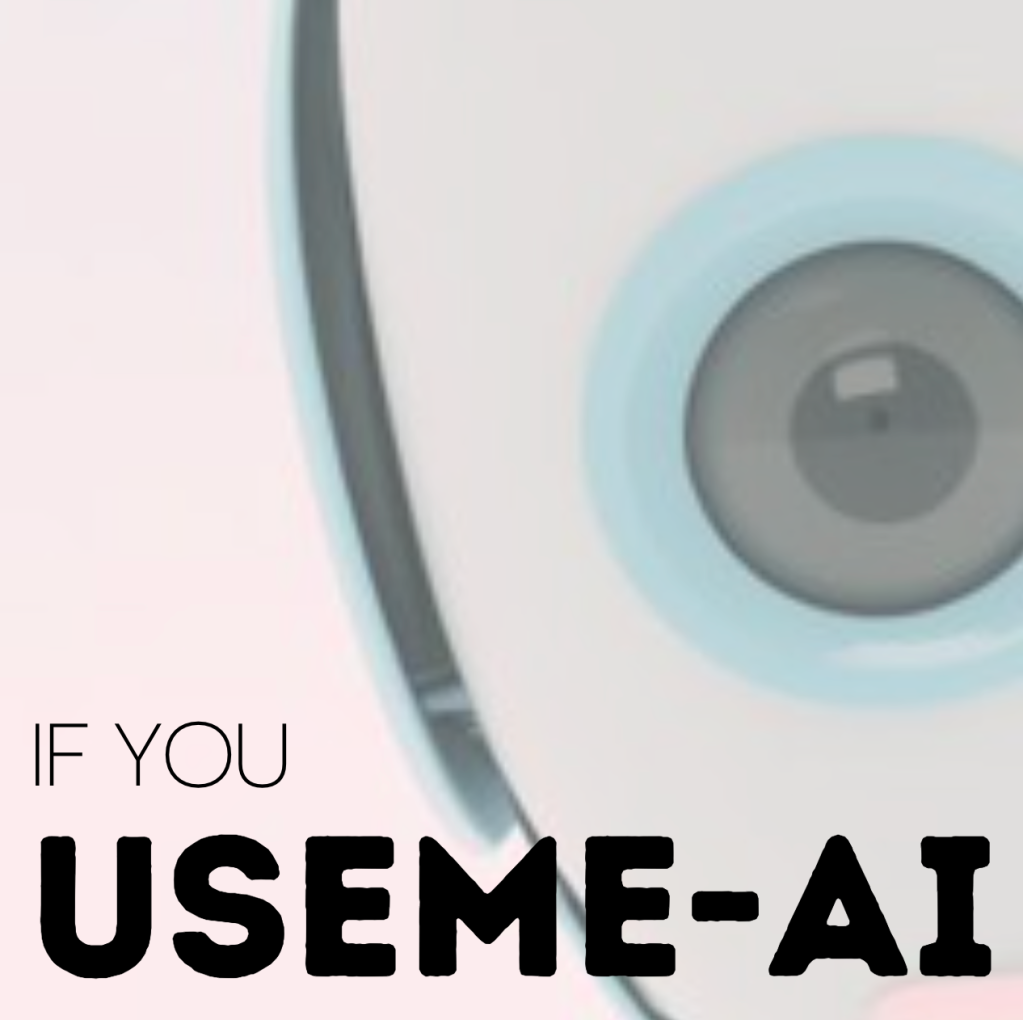
What can schools do to adapt to rapidly developing AI technologies and their potential implications for teaching, learning and assessment? (If You) USEME-AI is a draft structure to support conversations and actions.
If you are visiting this post from a shared link: an updated page is kept here.
I believe that schools that create a culture of thinking and powerful learning opportunities will be better able to benefit from these impacts than more traditional schools. In a class where there is an ‘invisible middle’ between and assignment being set and the work being turned in, there is more opportunity for misuse of technology – something that can easily be mitigated in classes where there is ongoing feedback, conferencing and discussion of the processes of creating, analysing, writing, editing and evaluating.
For those that like tech models, AI has the power to push the “R” of the SAMR model, or the “T” of the RAT model. In my last couple of posts (and in screenshots all over Twitter), you can find examples of how AI tools have ripped through the lower-order levels of these models. There will be some reflection needed in schools – and assessment agencies.
With AI already in the hands of students, is this an opportunity to refocus on the purposes of schooling: to bring the IB Learner Profile to life and to think about ATL Skills in design for learning? Being able to use these tools effectively could be the emergence of a new literacy related to prompt engineering, descriptive language and evaluating outputs with a critical eye.
How might understanding our learners as AI-augmented consumers, users and creators of knowledge shift the focus away from ‘cheating’ and towards constructive and productive relationships with technology?
Visit the WAB Learns AI Libguide for:
- Quick-starts and overviews for teachers, with tools and suggestions for:
- Leaning-in to the new AI reality
- Example prompts and ideas
- Academic Integrity in an AI World
- AI Ethics & Integrity
- How AI is being used towards the UN’s SDG’s
- Tools to try and how they work
- Updates to (IF You) USEME-AI
Resources & Linked Posts:
- This Post Was Written By AI (Oct 2022)
- This Post Was Also Written By AI (Dec 2022, adapting to GPT3)
- Thread of experiments with AI (scroll up and down, I’ll keep adding)
- WAB Innovation – AI Libguide
- Creating Cultures of Thinking (WAB Resources)
- Global Online Academy’s (GOA) Design Principles for Introducing Mastery Learning
- GOA’s Principles for “What’s Next” in Learning
- IB Academic Integrity Resources – though no explicit reference to AI (yet), the principles stand.
(If You) USEME-AI Draft Model 1.2
Draft 1.2 of (If You) USEME-AI is below. Older versions will be linked under the image. The version posted on this libguide will update live as I make edits – it also has working links and resources. This update includes the IB’s Statement on Academic Integrity.
It is licensed under Creative Commons, Non-Commercial, Share-Alike, Attribution. I’d love feedback on how to make this better, particularly from teacher-librarians.

Version Histories – Click to see older versions
Accessible Tools to Try
Some of my go-to links for trying AI tools (we can’t access ChatGPT in China):
- They’re mostly shared on this libguide
- Perplexity is a good demo of GPT3.5 + Bing as a search tool. Concise & Detailed response options, cited sources, working links. I think if this was paired with Ecosia, we could have a great tool for Search for students, free from ads/junk and supporting a good cause.
- You.com is a personalised search engine that has GPT Chat built in.
- CoPilot for lesson planning, vocab lists, and other teacher-facing uses.
- Wolfram|Alpha for Computational Search. This has been around a long time, and is amazing.
- TutorAI for differentiation and student-facing explanations, feedback and more.
- Craft for GPT3-assisted notes. See a long page of experiments & evaluations here.
Some accessible image generators:
- MidJourney on Discord, for image generation. Free to try, and you can learn from others’ prompts.
- DALL-E 2 in Microsoft Designer. Waitlist needed, but a way to access DALL-E 2 if you can’t access OpenAI.
- StableDiffusion in PlaygroundAI. Lots of tools to try and updating often. StableDiffusion is the model at the heart of some of the ethical concerns about real artists’ work being used as training data, so use with caution.
Academic Integrity in an AI World
“Academic integrity is a principle in education and a choice to act in a responsible way so others can trust us. It means conducting all aspects of your academic life in a responsible and ethical manner. The IB expects students to produce genuine and authentic pieces of work, that represent their own abilities.” IB. 2022.
- OriginalityAI has plagiarism & AI detection, with the ability to make teams. See some examples on here, though some workarounds have already been reported here.
- GPT2 Detection demonstration (Demo) on HuggingFace. Copy-paste text to see probability of it being AI-generated.
- See some examples of GPT-generated university admissions essays, analysed with these two tools, here.
- Umm… Maybe. Demo of AI-image generation detection on HuggingFace. Not 100% reliable.
Academic integrity is about building a culture and practises of trust, ethics and fair use. We should move beyond “gotcha” and suspicion and support students in how to be mindful and creative in their use of any tech tools.
Teacher-librarians & EdTeh integrators are your school’s super-power for adapting to new technologies, literacies and academic integrity. See this post by Kay Oddone.
Thank-you for your comments.